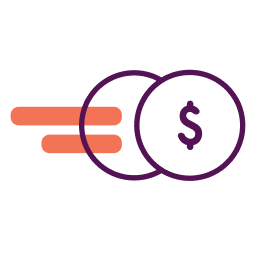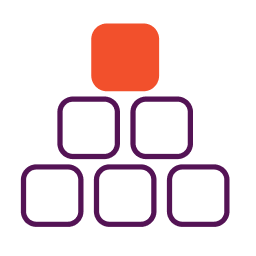Get to know SBA Microloans
Ty Kiisel • January 26, 2021
What is a SBA Microloan?
The SBA Microloan program was designed to help veteran and women owned businesses, minority-owned businesses, low-income individuals, and other small business owners and entrepreneurs. Through the program, business owners can get small loans of up to $50,000.
Unlike SBA disaster loans, SBA Microloans don’t come directly from the SBA. Instead, the SBA provides loan funds to specially designated intermediary lenders, which are usually non-profit community-based organizations.

Top Financial Options
Your small business financing search stops here. Compare your top small business financing options, from over 160 financial products – with Phililoan.
Standard loan terms and costs for SBA Microloans
Rates are negotiated between the lender and intermediary, subject to specific formulas. The average microloan amount was $14,434 in FY2020 and the average interest rate was 6.5%.
The longest loan term is six years, and balloon payments are not allowed.
Benefits of SBA Microloans
Pros
- You may have a better chance of qualifying for a loan
- Loan terms
- Loan interest rates
- Friendly application and approval process
- You may have a better chance of qualifying for a loan
Small business microloans were created for businesses who struggle to find other sources of funding. If you’ve been denied for small business loans by traditional lenders, you may have a better chance of getting approved for an SBA Microloan. - Loan terms
Most business loans for new businesses are very short-term loans. Often, you have just a few months to repay them. However, SBA Microloans have loan terms as long as six years, making the monthly payments more affordable. - Loan interest rates
Many business loans have sky-high interest rates and fees. By contrast, in FY2020 the average SBA Microloans interest rate was 6.5%. Rates are negotiated between the borrower and the intermediary, and typically range from 6% to 9%. - Friendly application and approval process
The organizations that make these loans often help applicants through the application process, realizing that many of them may have had bad experiences trying to get financing in the past. You’re not likely to be “just a number” here.
Drawbacks of SBA Microloans
Cons
- Relatively small loan amount
- Limited availability
- Relatively small loan amount
With an SBA Microloan, you can borrow up to $50,000. However, microlender intermediaries are generally required to maintain a loan portfolio of loans with an average loan size of not more than $15,000 so smaller funding amounts are common. Many businesses will need much larger loans to expand and grow their business. If that’s the case, you’ll need to explore other loan options. - Limited availability
These loans may be hard to find. They often serve limited geographic areas and may not be available in your area. The non profit lenders that make these loans don’t have big marketing budgets and often have more limited staff and funding than larger lenders.

How does the SBA Microloan program work?
If you decide to apply for an SBA Microloan, you’ll need to work directly with one of the SBA’s intermediary lenders. These lenders must meet the SBA minimum requirements but may have their own requirements as long as they are not discriminatory. Generally these loans require collateral if available for most loans. But when it comes to the SBA Microloan program it’s acknowledged that borrowers may not have collateral. The Standard Operating Procedures for these loans encourage lenders to “be creative in their definitions of acceptable collateral.” .
SBA Microloan lenders must provide free technical assistance to help borrowers be successful. This may mean you’ll need to undergo training courses designed to help you expand and grow your business successfully.
What are the SBA Microloan eligibility criteria
For the most part, applicants must meet the eligibility requirements of SBA 7(a) loans to be considered eligible borrowers for an SBA Microloan. (View those requirements here.)
At a minimum, the business applying must:
- Be a start-up, newly established, or growing for profit small business concern or, a non-profit child care center.
- Qualify as a small business under SBA size standards.
- Cannot be in an ineligible industry (similar to 7(a) requirements).
- Must be a U.S. citizen, lawful permanent resident or non-citizens lawfully in the U.S. with a work permit.
If the business is applying for a loan of more than $20,000, it must meet a “credit elsewhere” test that essentially demonstrates the applicant can’t get similar financing from non-federal sources. Don’t let this worry you; the lender will prepare this documentation.
What is the minimum credit score required for an SBA loan?
There is no minimum personal credit score or business credit score required for this program. Typically borrowers in this program have not established credit, or have lower credit scores than business owners applying for 7(a) loans. SBA microlenders must determine whether the applicant has acceptable credit. They may require an explanation for problems in the microloan borrower’s credit history.

What is a microloan used for?
Microloan proceeds may be used to purchase furniture, fixtures, supplies, materials, equipment, and/or for working capital.. In addition, if you are a home-based business you may only use funds to improve the part of your home that is specifically dedicated to your business.
There are times when these loans can be used to refinance debt, provided that will improve the debt position/cash flow of the microborrower.
But they may not be used for real estate, and lines of credit are not allowed. They may not be used to “make payments, distributions, or loans to an associate of the applicant except for compensation for services actually rendered at a fair and reasonable rate.” In addition, there are limitations on when these loans may be used to pay delinquent taxes.
When you should (and should not) take out an SBA Microloan
If you’re on the fence about taking out an SBA Microloan, here are three situations when it makes sense to do so:
- You need a relatively small amount of money
If you need $50,000 or less to purchase inventory, buy new equipment, or to get new furniture, taking out an SBA Microloan can be a smart way to get the cash you need if you can find a lender and qualify. - You’ve struggled to find funding elsewhere
If you’ve tried to get traditional bank loans and failed, an SBA Microloan can help you get the funding you need to expand your business. - You need several years to repay the loan
With an SBA Microloan, you can have up to six years to repay your loan. That’s a big advantage over some other business loans, which have much shorter repayment terms (and much larger monthly payments).

Business Loan Builder
Sign up with Nav and access your full business credit scores & reports, including the FICO® Small Business Scoring Service℠ — the score used to pre-screen SBA loans.
See My Business Scores Now
Although SBA Microloans can be useful, they’re not for everyone. You should avoid SBA Microloans in the following situations:
- You need over $50,000
If you need a significant amount of money, an SBA Microloan will be inadequate for your needs. You’re better off with another financing option, such as a traditional business loan, if you need to borrow more than $50,000. - You can qualify for financing elsewhere
These loans are for borrowers who are disadvantaged and can’t get similar loans from other lenders. - You plan to buying real estate
If you need to buy a new office or warehouse, an SBA Microloan is not for you. SBA Microloans can’t be used for real estate purchases, so you’ll need to find another funding alternative. - You need cash right away
With an SBA Microloan, you can have your loan in a few weeks if you meet lending requirements. However, if you have a pressing need, you may not be able to wait that long. If you need cash flow right away, you’re better off going through an online lender that can disburse your loan in a matter of days. Or, you may be able to qualify for an SBA Express Loan.
Applying for a microloan
A permanent loan is the first loan on a commercial property, similar to a traditional mortgage loan.
You can typically get a permanent loan from any commercial lender, but they’re not available for short-term financing needs—they typically have an amortization schedule and a repayment term of five years or more.

Alternative loan options
Looking for other funding options? Consider other SBA loan programs, such as an SBA 7(a) loan or an SBA 504 loan.And don’t rule out other types of small business loans that may be a better fit. Funding from this program is limited and it will be difficult for some borrowers to secure one of these loans. For a small amount of financing you may need to turn to other sources— even small business credit cards.
